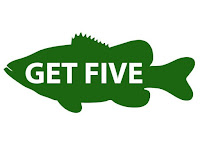
As many anglers in Texas know, Lake Conroe is one of those fisheries with a colorful past. Known for producing giant bass and more than a few ShareLunkers, anglers treasure this fishery. Lake Conroe also has had its share of controversy through conflicting priorities centered around hydrilla and management of aquatic vegetation. Hydrilla came, then it went, came back again, then went again along with thousands of acres of native vegetation planted by TPWD and angling groups including TBBU, TABC, and Seven Coves Bass Club. Home owner associations have been very effective in pressuring resource managers into keeping hydrilla in check and as a result, it has been difficult to maintain a balance between maintaining native vegetation and keeping hydrilla at bay. Through the process of working through conflict and balancing the needs of anglers and lake front property owners came the Lake Conroe Advisory Board. The LCAB, hosted by the San Jacinto River Authority is made up of representatives from the Lake Conroe Association, Bentwater, and other homeowner groups as well as angler associations including TBBU, TABC, TBFN, B.A.S.S. and Seven Coves Bass Club. This group met very effectively for several years while the plan for hydrilla control was being implemented. A relationship between property owners and anglers was forged and good communication prevailed.
Fast forward a year or two later, and Lake Conroe is feeling the brunt of a record Texas drought. The lake is 8 ft low and lake front home ownership is more of a concept than reality. Access is severely impacted and a cause for frustration for many anglers and homeowners alike. With the new found real estate between their dock and the water, many homeowners have discovered just how many stumps and trees inhabit Lake Conroe. In the early days, it is my understanding that the lake filled quickly and much of the standing timber was not removed. Many of the trees have broken off below the water's surface at normal pool, but with the lake as low as it is, much of this timber is now visible. It is likely that low lake levels will be common in the future given competing uses for Lake Conroe water.
The stumps which are perceived as hazards are now the target of a new project in the name of public safety. The project opportunity arose when a stump removal contractor from Georgia had some downtime from a project he was hired by a developer to do on Lake Livingston. A plan was hastily developed, money was appropriated, and permission was given by the San Jacinto River Authority. The stump removal project developed by a local marina owner and the LCA however is a case study in how not to begin a large project which impacts habitat on a public water body. I share the homeowners concerns for public safety. I have lost my share of lower units due to underwater hazards and safe navigation is something all anglers can get behind. The problem however, lies with the oversight to properly involve TPWD in order to evaluate the plan's impact on habitat. The communication regarding where and how many stumps to be cut was also a problem and a last minute deal to cut the price per stump by the contractor increased the number of stumps to be cut from around 250 to 400. All of these plans were made without consideration for the impact on habitat, fish, or wildlife.
Once word got out about this poorly conceived plan, TPWD and angling groups got involved and asked that the plan be reviewed, and impact on habitat be considered prior to any work being done.
I am now happy to report we will likely see a project which in the end, will be a benefit to all boaters on Lake Conroe.
 |
The best meetings always have
law inforcement invited |
The LCAB was convened at the invitation of SJRA and a plan was proposed which would identify hazardous stumps to be cut, and others to be marked. A highway of boat lanes is being proposed that will be cleared, mapped, and marked to the benefit boaters for years to come. With the involvement of TPWD comes the realization that there may be tens of thousands of matching dollars available from USFWS boater access grants making this project far more beneficial than what the homeowners association could have done on their own.
One of the most important lessons learned from this is the reminder that when everyone works together, we can accomplish far more than what we can do on our own. I will remain involved with this project and post updates as they become available.
You can view a copy of the PowerPoint presentation given at the meeting here
http://dl.dropbox.com/u/31416180/Lake%20Conroe%20Advisory%20Presentation%2012-13-2011.ppt




